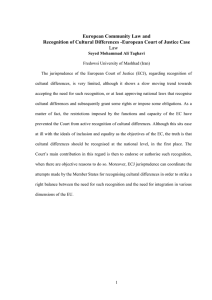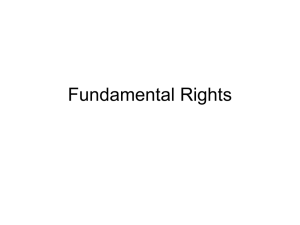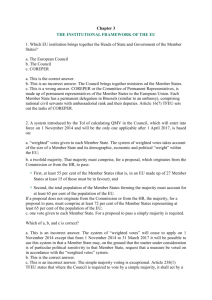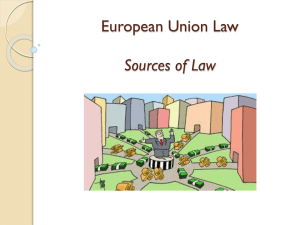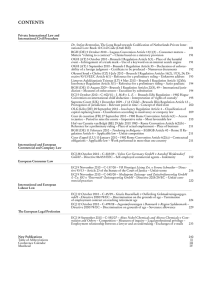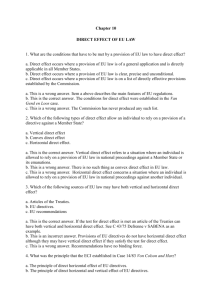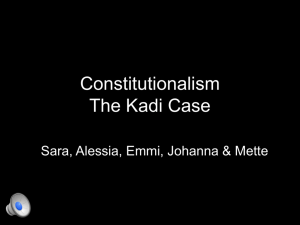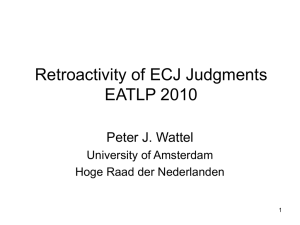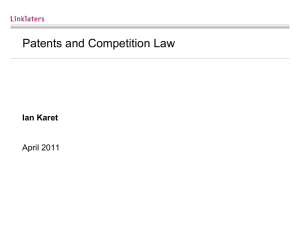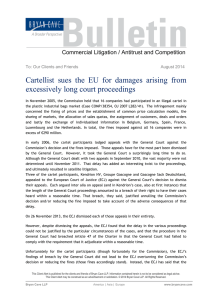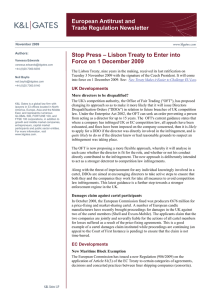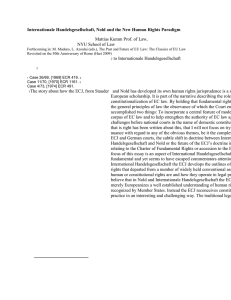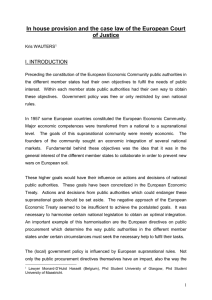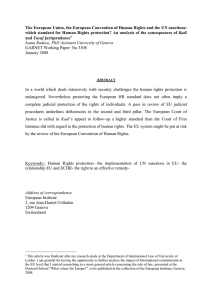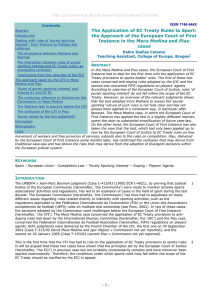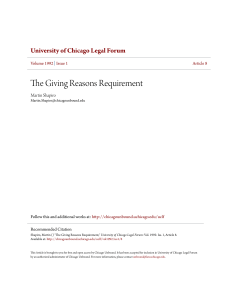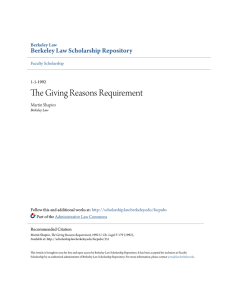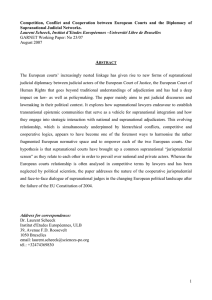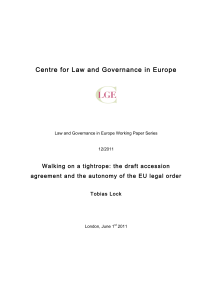The European Court of Justice
advertisement
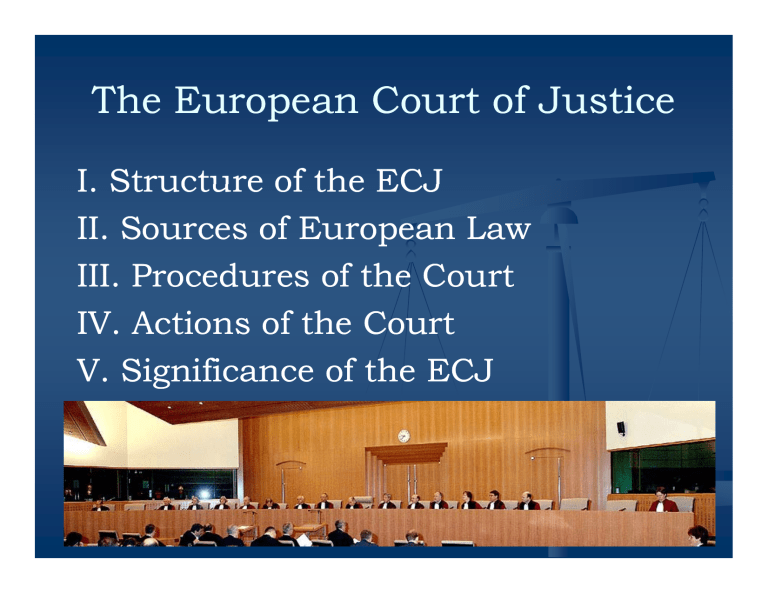
The European Court of Justice II. Structure of the ECJ II. Sources of European Law III. Procedures of the Court IV. Actions of the Court V. Significance of the ECJ I Structure of the ECJ I. European Court of Justice (ECJ) President of the Court Elected by y Court,, 3 year y term Advocates General Court of First Instance (CFI) (CFI) 27 members, one from each Member State, 6 year renewable terms Limited jurisdiction European Civil Service Tribunal II. Sources of EU Law Primary Law: (Constitutional) Treaties: Treaties of Paris, Paris Rome, SEA, Maastricht, Amsterdam, and Nice Constitutional Boundaries Previous Decisions Van Gend en Loos (1963) – Direct application C t v. ENEL (1964) – EU law Costa l as autonomous t and d primary over national law Cassis de Dijon j ((1979)) and Commission v. Federal Republic of Germany (1984) – Mutual recognition Secondary Law EU Laws L and dR Regulations l ti International law III. Procedures within the ECJ Written application Relevant documents are assembled Assignment of case Advocates--General Advocates Examines and make preliminary submission Public hearing C Court t makes k its it decision d i i To a Chamber and appointment of a judge judge-rapporteur No dissents Rulings are final IV. Actions of the Court ECJ ACTIONS: Preliminary rulings (on national court cases) Actions for failure to fulfill an obligation Actions A ti for f annulment l t Appeals (from the CFI) CFI ACTIONS: T Actions for failure to act Actions for damages Actions by staff The ECJ building in Luxembourg V. Significance g of the ECJ ECJ Roles: Constitutional C tit ti l Court C t Supreme Court Administrative Court ECJ establishes truly supranational law BUT with limited jurisdiction Big gQ Q: What might g be the status of EU versus national law in future? Like US in 1909 or like US in 2009?
